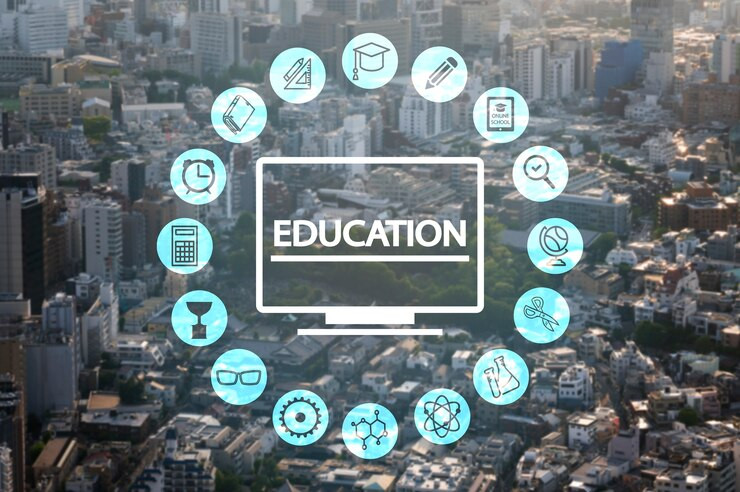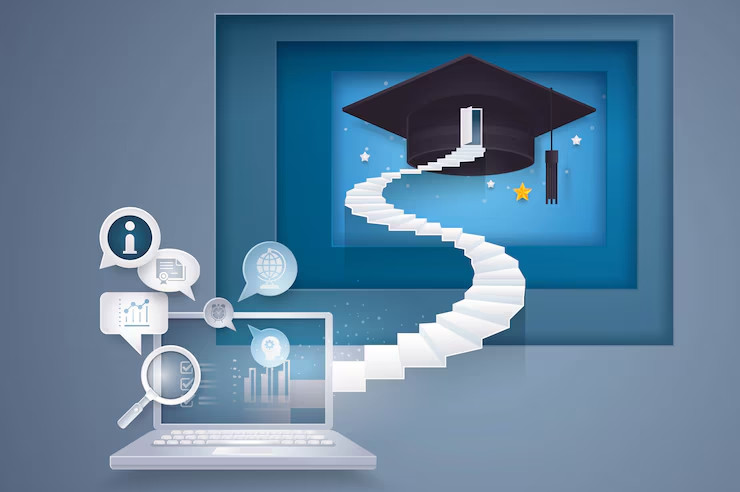Why Open-Source is the Future of Affordable Learning
Education should be available to everyone. High costs, limited access, and outdated resources often block learners from reaching their goals. Open-source platforms are changing this. They have free materials, flexible tools, and an approach that is based in a community. New ways to learn and share knowledge are created now for students, teachers and institutions. Open-source education makes learning affordable and accessible to all.
 Pic Courtesy: Freepik.com
Pic Courtesy: Freepik.com
Free Educational Resources for Everyone
Traditional textbooks and courses are expensive. Many students struggle to afford them. Open-source platforms remove this barrier. Websites like Khan Academy, Coursera, and MIT OpenCourseWare offer free lessons. High quality materials are available without the cost of a fortune. The subjects range from math to philosophy making knowledge available to all. Educators also benefit. Open resources can be used by teachers to create lesson plans. These materials can be integrated into the curriculums of schools. Education quality is improved and institutions save money. Learning no more depends on financial background with the tools of the open source.
Customizable Tools for Personalized Learning
 Pic Courtesy: Freepik.com
Pic Courtesy: Freepik.com
Students learn not the same. Some understand concepts better through videos, while others prefer hands-on exercises. Reading materials work for some, but interactive lessons help others absorb information faster. Customization of learning tools is made possible through using open source software. It provides students and teachers to adjust resources to meet specific needs. Platforms like Moodle and Open edX allow educators to build unique courses. Teachers create lessons that suit different learning styles. Thus access to content that helps the students study at their own pace is provided and style. Text based guides, quizzes or multimedia presentations are what they can choose. Online services also help students manage academic challenges. Writing assignments takes time, and not everyone finds them easy. In such cases an essay writing service Edubirdie helps students handle complex papers. It provides expert guidance for structuring essays, developing arguments, and refining research. This service works alongside open-source tools, allowing students to improve their writing. Thereby, able to focus on creativity and follow the academic requirements. The right resources help in balancing coursework. Open-source platforms provide study materials, and additional services support skill development. Students can practice writing, coding, and problem-solving in a way that fits their pace. Learning becomes flexible, allowing students to build knowledge without pressure. Open source education greatly enables the teachers as well as the learners. It allows access to high quality tools without financial barriers. Students get a chance to shape their learning experiences. The right mix of resources allows success in the academic world yet in a form that is just perfect for them.
Community-Driven Innovation and Collaboration
 Pic Courtesy: Freepik.com
Pic Courtesy: Freepik.com
Projects succeed with open source only when people work together. New tools are made by developers, the content is refined by educators, and students bring new ideas. Each contribution strengthens the system. They keep the resources up to date with regular updates. Anyone can suggest features, fix bugs, or expand functionalities. This ongoing process ensures that learning tools stay useful and accessible. Collaboration drives digital literacy. Students practice coding, analyze data and develop solutions. Open platforms encourage teamwork and creative problem-solving. GitHub and similar sites allow the user to work on actual projects. These experiences also provide experience with valuable skills for future careers. Hands-on learning builds confidence. Students apply knowledge in the real world and are aware of the impact of open source contributions for education. They learn how to communicate with a team, before they manage projects and get to work refinement. Open-source education goes beyond theory. It is designed to prepare learners for practical challenges on technology, research, and business issues in the enterprise. Every project increases the students’ knowledge and gives them ‘hands on’ experience along the way.
Institutions Embracing Open-Source Solutions
Primary and collegiate learning centers praise open-source tools for their benefits. Many institutions now rely on free software to educate their students. They select online platforms that let students use excellent content at no cost.
Popular open-source tools in education include:
- Linux – a reliable operating system for academic research and computing.
- LibreOffice – a free alternative to paid office software.
- OpenStax – a collection of free digital textbooks for students.
- Moodle – a learning management system for online courses.
- GIMP – an open-source tool for graphic design and image editing.
Institutions also develop their own open-source programs. Universities exchange digital versions of classes, research papers and learning materials. These resources help students worldwide. Public authorities understand how open-source education affects the system. Many invest in digital learning projects. They fund initiatives that provide free materials. The open-source education system ensures wider distribution of knowledge. Students in the future will experience free access to learning techniques that adapt to their needs.
Conclusion
Open-source is shaping the future of education. Free materials, flexible tools, and community-driven innovation remove learning barriers. Institutions, students, and educators all benefit. Education becomes more accessible for all students because open-source platforms continue to evolve as an affordable education standard. This shift is not just a trend—it is the foundation of future learning.